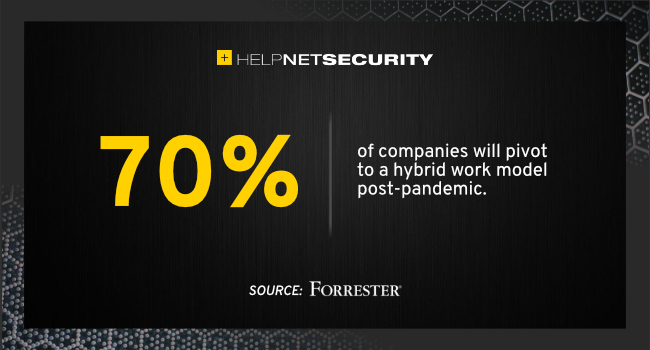Future of work driven by employees having the ability to work anywhere
While many business leaders are drawn to vaccine passports as a solution to bring their workforces back to the office full-time, Forrester predicts that 70% of US and European companies will pivot to a hybrid work model post-pandemic.

In a hybrid model setup, at least some employees can work anywhere they want for two or more days a week while coming into the office on the remaining workdays. The research shows that companies that master this opportunity will accrue both employee experience and business benefits, including higher retention rates and long-term recruitment advantages.
Employees hope to work from home more often
55% of US employees say they hope to work from home more often, even after the pandemic ends. Additionally, leaders need to consider overall employee sentiment toward vaccination when planning return-to-office strategies. According to data:
- 47% of US workers and 54% of European workers believe vaccines will not completely stop the spread of the COVID-19 virus.
- Only 39% of US workers and 34% of European workers feel that their employers have a plan in place to provide vaccination.
- Two-thirds of workers in both regions are not comfortable with employers collecting their personal data specific to the pandemic.
The future of work in the eyes of C-level executives
While some C-level executives view anywhere-work with skepticism, this model is now imperative for higher-value talent. To successfully implement this model, however, companies must assess specific anywhere-work readiness elements to determine preparedness. They must also consider refreshing their office spaces, including reconceptualizing desk usage to support hybrid work.
“The pandemic has taught us that organizations play a bigger role in employee wellness than previously understood,” said Keith Johnston, VP and group research director at Forrester.
“It also reveals how the future of work will be driven by employees having the ability to work anywhere. By shifting conversations to focus on the working environments that best suit employees’ needs moving forward, organizations can ensure that their employees feel they are being heard and that they have the autonomy and tools to do their jobs effectively.”